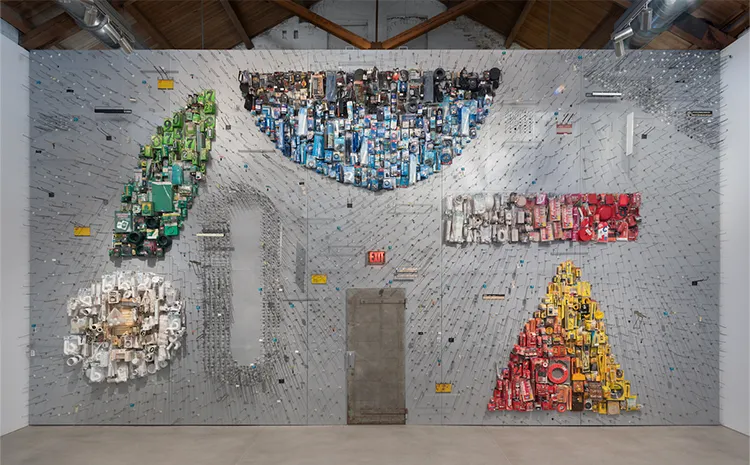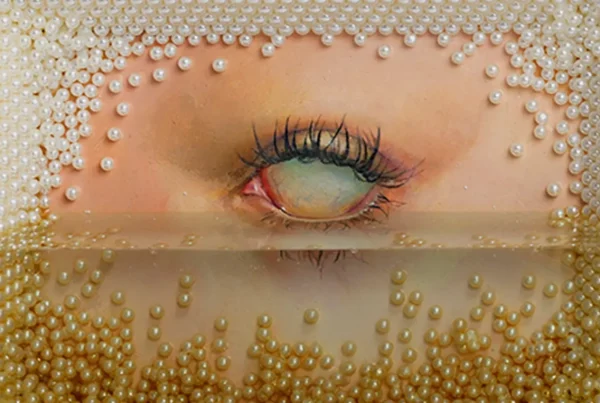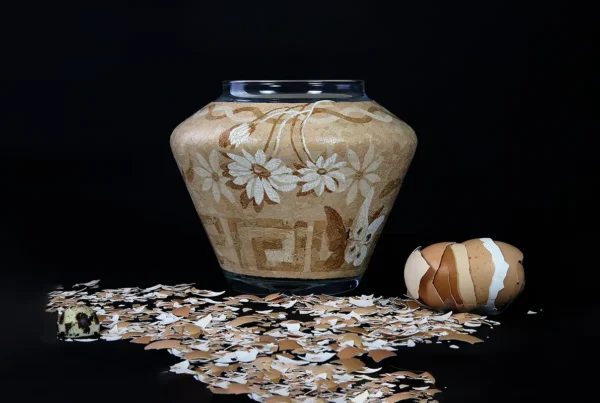Roots and Revitalization: Theaster Gates on Urban Renewal Through Art
Theaster Gates‘s artistic journey is intimately connected to the urban landscapes of African-American communities, particularly those grappling with historical economic neglect. This engagement is not merely thematic but is an essential component of his practice as an artist and urban planner. Driven by the post-2007–2008 financial crisis conditions, Gates aims to infuse life back into these neighborhoods by intertwining art with urban development. This unique blend not only physically transforms spaces but also rejuvenates them culturally and economically, striving to improve the quality of life for residents.
In describing his motivations, Gates emphasizes the role art plays in societal enhancement and community engagement. Through his initiatives, disinvested neighborhoods are not just rebuilt but are imbued with new cultural and economic vitality. This approach reflects a broader vision where art transcends traditional boundaries to become a dynamic tool for urban renewal and social change. Gates’s commitment to these ideals stems from a profound belief in the power of art to enact real-world change, making him a pivotal figure in contemporary social practice art.

Theaster Gates: Early Influences on Theaster Gates
Chicago holds a special place in Theaster Gates’s heart and work, having shaped his perspectives and methodologies from a young age. Raised on the West Side by a roofer father and a school teacher mother, Gates grew up in an environment where craftsmanship and education were revered, setting the stage for his future endeavors in art and community development. Discussions on civil rights were commonplace in the Gates household, instilling in him a deep sense of community and activism. This upbringing not only influenced his thematic focus but also his approach to creating art as a medium for societal commentary and transformation.
The family’s influence is evident in Gates’s work, where he employs his understanding of craftsmanship to address broader social themes. By leveraging his background in urban planning and his sensitivity to the cultural and historical dynamics of African-American neighborhoods, Gates crafts art that speaks to and for the community. This personal and professional fusion empowers him to tackle complex social issues through the lens of art, making his work profoundly relevant in both the local context of Chicago and the broader sphere of global art.

Inventing Histories: “Plate Convergence” and the Art of Storytelling
Theaster Gates’s project “Plate Convergence” at the Hyde Park Art Center is a testament to his inventive use of narrative within the visual arts. In this work, Gates introduced the fictional character of Shoji Yamaguchi, a Japanese potter who integrates into a black community in Mississippi. This narrative construction allows Gates to explore the profound themes of cultural integration, exchange, and historical significance through the tactile medium of ceramics. By inventing this story, he not only questions the boundaries between truth and fiction but also uses these blurred lines to highlight significant social and political issues. This approach showcases Gates’s belief in the power of storytelling within art to foster understanding and dialogue among diverse communities.
The project serves as a platform for discussing broader themes of racial and cultural fusion, encapsulating Gates’s overall approach to art as a space for critical engagement and reflection. Through “Plate Convergence,” Gates demonstrates how fictional narratives can enrich our understanding of real-world issues and dynamics, making a compelling case for the role of fabricated histories in addressing and articulating complex societal themes. His work here, as elsewhere, blurs the distinctions between art and life, urging viewers to reconsider their own perceptions of history, identity, and community.

Theaster Gates: Community Engagement and Transformation through the Rebuild Foundation
The Rebuild Foundation stands as one of Theaster Gates’s most ambitious initiatives, showcasing his dedication to revitalizing communities through art. Under Gates’s direction, this organization transforms underutilized buildings into vibrant cultural spaces that promote community interaction and access to the arts. One of the flagship projects, the Stony Island Arts Bank in Chicago, not only preserves historical archives but also acts as a catalyst for neighborhood revitalization. By creating these “micro-institutions,” Gates fosters environments where cultural, educational, and artistic creativity can flourish, thereby supporting broader community development.
The impact of the Rebuild Foundation extends beyond physical spaces; it influences how communities engage with their own cultural narratives and histories. Each project under the Foundation’s umbrella is designed to encourage local participation and investment in the arts, which Gates views as essential for fostering sustainable community growth. This commitment to community-centric development through the arts illustrates Gates’s vision of art as a fundamental tool for social improvement and empowerment. Through his dual roles as artist and urban planner, Gates continues to reshape the landscapes of communities, making art an integral part of everyday life and a driving force for communal transformation.






